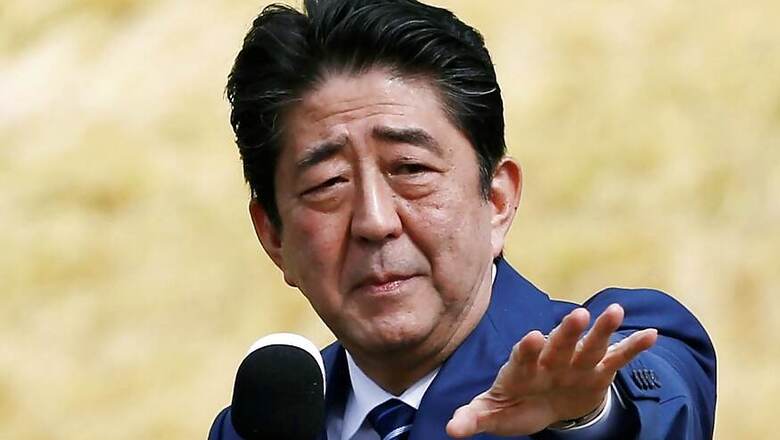
views
Tokyo: Japan adopted new defense guidelines on Tuesday that include plans for its first aircraft carrier and increases in spending and weapons capability in coming years, citing the need to counter potential threats from North Korea and China.
The guidelines approved at a Cabinet meeting call for refitting an existing helicopter carrier into a ship that can deploy 42 expensive F-35B stealth fighters capable of short takeoffs and vertical landings part of Japan's planned purchase of 147 F-35s over the next decade.
The guidelines would replace Japan's current defense plan halfway through and underscore Prime Minister Shinzo Abe's push to expand Japan's military role and capability to make Japan what Abe has called "a normal country."
Abe has long wanted to revise Japan's US-drafted constitution that renounces war and has already broadened the concept of self-defense, the sole role of its armed forces while the US has fulfilled Japan's security needs since its occupation after World War II.
Defence officials say Japan needs higher deterrence and increased missile defense and fighter capability to cope with threats from North Korea and China and other changes in the region's security environment.
The new guidelines say Japan needs to be well-prepared and demonstrate its strength against threats, noting the archipelago is vulnerable to natural disasters and its long coastline is dotted with vulnerable nuclear power plants.
According to officials, the Maritime Self-Defence Force's helicopter carrier Izumo, a 250-meter (820-foot)-long, flat-top destroyer that can carry 14 helicopters, will be refitted as an aircraft carrier.Japan has relatively little land on which to build runways long enough for conventional F-35s, and an aircraft carrier would be particularly useful in the western Pacific, where Japan wants to play a greater role as part of the US-Japan alliance. C
ritics say possession of an aircraft carrier would give Japan a strike capability in violation of its pacifist constitution that limits use of force to self-defence only.
Under the new defense guidelines, Japan plans to possess cruise missiles designed to hit enemy targets, which opponents say could go beyond Japan's pacifist principle. Defence officials brushed off the criticism, saying Izumo will be a multifunctional warship used as aircraft carrier only when necessary for national defence. The guidelines say Japan needs to beef up its air defence capability in the Pacific, while expanding surveillance in the area.
The Defence Ministry says Japan plans to purchase 105 conventional F-35s and 42 F-35Bs to replace some of its fleet of F-15s. The big price tag for the jets a F-35B costs about 10 billion yen ($90 million) will drive up Japan's defense spending, which has already climbed steadily for six straight years since Abe took office at the end of 2012.
Japan plans to spend 235 billion yen ($2 billion) to buy a pair of land-fixed US missile defense system, Aegis Ashore, as well as other American missile interceptors.
The Cabinet, under the guidelines, also approved a new Medium Term Defence Programme requiring a record five-year defense spending of 27 trillion yen ($240 billion) beginning 2019, up more than 2 trillion yen ($17.6 billion) from an earlier five-year defence budget.
As Japan comes under pressure from President Donald Trump to allow more exports from the US, purchases of costly American weapons would be a way to reduce the US trade deficit, while enhancing military cooperation between the allies.
Buying more American weapons, however, would be a setback for Japan's defence industry and its hopes to develop its own replacement of F-2 fighter jets are uncertain. The guideline did not mention whether the F-2 successor would be made made-in-Japan or jointly developed.
















Comments
0 comment